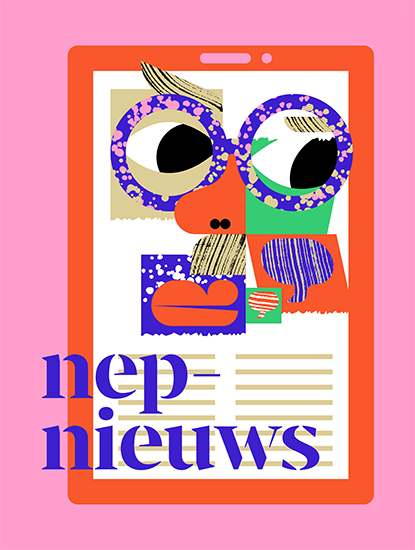Although social media aren’t inherently news media, they are a major source of news for many young people, as shown by the Artevelde study as well as the Digital News Report and Apestaartjaren. At the same time, their use of news is rather passive. News articles serve almost as a quick snack: only 47% of youngsters click on articles occasionally, and even then they usually only skim the contents. Many youngsters also indicate that they never share news articles (71%), react to them (67.2%) or like them (30%).
How do youngsters deal with fake news?
Research at Artevelde College in 2018 and 2019, with 641 and 1090 participants respectively aged between 15 and 24, looked into the news literacy of young people when it comes to fake news. Are they able to recognise fake news, or could they use some help?
Social media as a news source
read news on social media at least occasionally.
use Facebook as their main news source.
Can young people recognise fake news?
have heard of fake news.
can’t explain what fake news is.
manage to correctly judge 6 (fake) news articles as real or fake.
Youngsters do know about fake news, and the majority can describe what it entails, although 1 in 5 find that difficult. But recognising fake news appears to be a struggle for everyone. When asked to judge 6 articles as real or fake, only 3% manage to get all 6 right. Even an article that was recently debunked as fake by several news media was not recognised as fake news by 2 out of 5 students.
Need for extra sources
mostly trust their own logic, background knowledge or intuition to know if news is reliable.
sometimes check the source of an article if they’re in doubt.
trust the quality of the content to estimate its correctness.
Even though there are a few well-known tips to help you recognise fake news, not many young people are aware of these. Many simply trust their own gut, even though that seems to be accurate in only 3% of cases, as shown above. If you know that fake news can spread like wildfire on social media, you’ll understand that it’s really important to help young people learn to recognise fake news. Youngsters mostly look to parents and teachers for guidance.
Download the research report (Dutch)
Read the conclusions from the Artevelde study, including all the numbers and further context.
